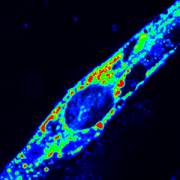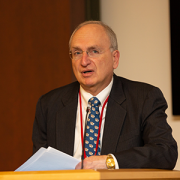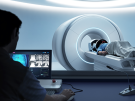Understanding the use of focused ultrasound in pediatrics
The fundamental principle of focused ultrasound (FUS) is almost analogous to using a magnifying glass to focus beams of sunlight on a single point. Experts at Children’s National Hospital are using FUS as an acoustic lens that uses multiple intersecting beams and targets — specifically deep within the brain — to treat brain tumors in pediatric patients.
Hasan Syed, M.D., co-director of the Focused Ultrasound Program at Children’s National, explains how two FUS methods are currently being used in two different trials — sonodynamic therapy and blood-brain barrier disruption — for the first time in pediatrics.
What is focused ultrasound?
FUS has diverse biological effects that can be categorized as thermal or mechanical: high-intensity focused ultrasound (HIFU) and low-intensity focused ultrasound (LIFU).
The treatments: 5-ALA with sonodynamic therapy and microbubbles for blood-brain barrier disruption
The difference between 5-aminolevulinic acid (5-ALA) medication and microbubbles has to do with the mechanism of treatment.
Dr. Syed explains that 5-ALA is activated by the focused ultrasound. Once activated, the goal is that the drug leads to tumor cell death.
Microbubbles, however, are used specifically to open the blood-brain barrier with focused ultrasound. When that happens, medications — or in our case the chemotherapy agents we’re using in our clinical trial — will hopefully have a better effect on treating the patient and taking care of the tumor.
Children’s National has now treated a series of patients with sonodynamic therapy — or LIFU and 5-ALA. There haven’t been any adverse events — the first time in the world that something like this has happened.
“I think it’s very exciting, and it brings us hope for new treatment options,” Dr. Syed said. Children’s National continues to recruit patients for this trial.











